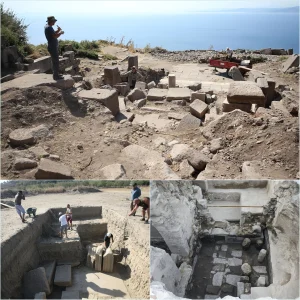A recent study on the remains of scribes in Ancient Egypt, buried in the Abusir necropolis near Memphis, suggests that their work took a physical toll on their bodies. Published in Scientific Reports, the study compared the skeletal remains of 69 adult males, including 30 identified as scribes who were buried between 2700 and 2180 BC.

Petra Brukner Havelková, the study’s lead author, highlighted that scribes, despite their elevated status in Ancient Egyptian society, showed signs of degenerative joint changes. This finding raises questions about the occupational hazards associated with their administrative duties, which were reserved for a privileged few in a society where literacy was rare.

The study revealed small but significant differences in the prevalence of certain skeletal traits between scribes and non-scribes. Specifically, scribes exhibited a higher incidence of osteoarthritis in various joints, including those in the lower jaw, skull, collarbone, shoulder, thumb, knee, and spine. These findings suggest that while scribes enjoyed prestigious roles, their work likely subjected them to physical strains that manifested in these skeletal changes.

This research underscores the complexities of ancient professions and their impacts on health, providing new insights into the lives of privileged individuals in ancient Egyptian society.





